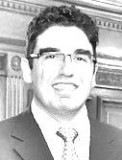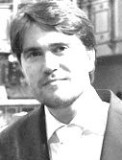HealthManagement, Volume 15 - Issue 1, 2015
The European Union is not alone in facing unprecedented demographic changes (ageing population, low birth rates, changing family structures and migration) that will have an impact on several sectors. The European population is becoming old very quickly, and this situation is leading to a scenario in which support to the elderly will no longer be provided by the active population as it was in the past.
In the past few years, the cost of care provision with respect to the gross National Product (GNP) has shown a definite boost, due to several factors:
• New medicines or technologies are available on the market.
• The average age of t he population and the incidence of chronic diseases have risen and increased the cost of population care provision.
• T h e economic crisis has impacted all the European Countries, reducing the level of prosperity of this territory.
Projections show that the cost of healthcare provision and the need for long-term care will rise continuously with respect to the GNP of the EU member states.
Making the elderly more active, for example by reducing the need for travelling, or increasing patient engagement, providing more opportunities, decreasing the social exclusion of this part of the population and rationalising costs and resources are the most promising actions that Member States and the European Union can perform in the near future.
The SPES (Supporting Patient s through E-services Solutions) project is an initiative co-funded by the Central Europe Programme to implement several pilots based on telemedicine devices, applications and infrastructure, with the aim of improving patient experience and facilitating access to care anytime, anywhere. Even if the pilots involve a small number of people, the real purpose is to prove in a realistic environment that technologies can effectively improve the quality of life of patients.
The project aims also at demonstrating that solutions based on technological innovation offer an attractive way of cutting down expenses in various ways as, for example, by reducing the necessity of going to medical facilities, thus reducing travelling and waiting time, serving remote areas, and generally, the overall cost of medical care. The adoption of these technologies implies a re-organisation of the structure of the care system, and re-engineering of the process of supporting patients and providing care services. These are the highest barriers to be overcome.
T he technologies used in SP ES come from Ambient Assisted Living solutions, telemedicine, e-health devices and social exclusion tools. These are the most promising solutions for implementing healthcare services, with little direct impact on the healthcare system in use.
SPES is making its contribution to the “Internet of Things”, which is demanding new application architectures. SPES partners, who became familiar with the integration of diverse technologies and systems, are exploring ways for the connection of SPES “objects” with established e-health systems at a regional level. SPES worked in 4 different geographical contexts; the cities of Ferrara, Vienna, Kosice and Brno, and faced four different types of chronic diseases or social challenges: respiratory problems, dementia, social exclusion and disabilities.
The Approach
The SPES project aims at transferring the approach and results achieved in the implementation of the VI FP OLDES project (Older People’s e-services at home), which developed telemedicine and tele-accompany services, designed to make the life of older people easier at home. For this reason, the aspects of implementing the solutions to provide services and the methodology to approach patients has become more important than the research into technical solutions or the development of new tools. SPES looked at the technologies market, from medical devices to laptops, from gPS trackers to advanced RFID tags, to find the necessary tools to realise new services or to offer improved services to patients.
Patients had the opportunity to experience an easy-to-use telemedicine solution designed to meet the needs identifiedin each pilot project. For example, in the pilot in Ferrara, one of the objectives was to lower their displacement costs and the time required for going to care providers (hospitals, physicians, medical centres), improving their daily life and general wellbeing. In Vienna, the support to patients, relatives and caregivers played a relevant role so solutions for patients affected by dementia became one of the central elements of the experiment.
Dealing with real patients and real data in an inter-countries realm, SPES represents one of the most advanced activities in telemedicine, and faced several constraints originating in the confused legal framework on health data management. Laws on privacy and personal data management vary from country to country, and are often in contrast with each other.
The Methodology
The experiences of the partners in previous projects suggested pairing a partner active in social service provision with a technical one from the same country. This solution impacts on several aspects and improves the quality of the results. Having a pair of partners working together in the same pilot, speaking the same language, and having the same cultural/social background reduces misunderstandings. It also allows the identification of requirements in a more precise way, allowing the social partner to express its expectations/ needs in the same language and with clear examples to the technical partner, who in turn is able to express these needs with more precise technical details. In turn, the technical partner helps the social partner install technical solutions, reducing the time required for testing and effective use of the platform. Strong collaboration between social and technical partners has led to the creation of new software and the identification of more use cases than planned, increasing the quality of the final results.
Working With Patients – The Experience in Ferrara
The low population density and the high ageing index generated in the Ferrara Province a higher healthcare cost, partly because of the increase in demand, also because of the consistent distance between the patient’s home and healthcare services.
The challenge was to assure continuous and integrated high-level healthcare provision to patients suffering from chronic diseases, using telemedicine solutions.
The telemedicine system consisted of sensors for remote monitoring of physiological parameters. The following devices and instruments were selected:
1. A touchscreen tablet for patient interaction with the telemedicine platform - answering clinical questionnaires, taking, viewing, registering and sending clinical data, communicating with the nurse/specialist by mail, webcam and appointment agenda.
2. An oxymeter for blood saturation and heart rate measurement.
3. A spirometer for measuring altered respiratory functions in order to evaluate patient response to therapy and immediate detection of worsening health conditions.
4. A web portal that allows administration of users and devices and the visualisation of direct output of the data collected by the oxymeter, the spirometer and clinical questionnaires.
For the purposes of the project, no specific skill related to the computer and/or medical devices was required from the patients. Patients and their caregivers were taught about the functionalities of the devices and activities they needed to perform.
PATIENT A: “I am satisfied because I have the chance to monitor my health by myself by answering the questionnaires and measuring my blood saturation.”
PATIENT B: “I find it very positive to self-monitor my health. It makes me feel more self-confident. I would like to keep using the oxymeter and the tablet. If I cannot keep it I’ll buy it.” Patients refer to feeling more selfconfident, for three main reasons:
1. They perceive that the specialist constantly monitors their health conditions, at least once a day.
2. They are able to directly check their health parameters themselves also by using the questionnaires.
3. They can better control their lives by having their health parameters monitored by clinicians, and feel empowered by the opportunity to be monitored at home.
The patients have appreciated the possibility to visualise and store clinical data measured with medical devices, discovering the importance of the constant monitoring of their health status.
SPECIALIST: “Telemedicine amplifies the amount of time needed to relate with the patient: this means that the professional needs more time. This requires specific and structured spaces in the organisation of healthcare provision and dedicated and skilled personnel.”
Specialists refer to their satisfaction with the SPES platform because:
1. They are able to remotely and constantly monitor patients’ parameters.
2. They are satisfied because patient empowerment is enhanced by self-monitoring.
3. They are more capable to define the medical follow-up agenda according to the health condition, redefining priorities.
4. All patients refer they are willing to continue the experience acquired with SPES.
Working With Patients – The Experience in Vienna
The Vienna pilot in Austria endeavoured to elaborate tailor-made solutions for people with dementia, whose problems ranged from poor memory to complete disorientation. Among other health risks, many of the people tested were prone to accidents because of their tendency to lose their way in the street, or due to problems organising their everyday life at home.
Discussions with potential users, their families and caregivers, as well as social workers and therapists led to a focus being placed on localisation, orientation and reminder functions in daily life as well as brain stimulation.
Five test cases were derived from the requirements identified:
• The test case ‘Orientation support’ provided the possibility to support people in case of emergency, with the aid of gSM/gPS localisation devices without restricting their movements;
• The test case ‘ Preventing dangerous situations’ referred to a system expanding the localisation device by including an RFID alarm to be activated when a disoriented individual got into a potentially dangerous situation, eg when he was about to leave his personal safety area’ (garden, terrace, daycare centre, flat, house etc.).
• ‘Talking Key’ meant that with the aid of RFID tags, the individual concerned could be reminded not to forget the keys when leaving the flat.
• ‘Finding Things again’ described a function which helped people to find lost objects using RFID technology via a touchscreen PC.
• In the test case ‘Brain Stimulation’ test, the patients used a touchscreen PC to activate recollections from their long-term memory. An individually-combined selection of videoclips, songs, music and photos could be accessed by touching the screen. Other reminders concerned the daily routine of the people participating in the test.
The target group was a heterogeneous user group in terms of diagnoses, phases of dementia and age. This was reflected in a large number of user requirements (intuitive operability, varying reaction time, volumes of acoustic signals and frequencies necessary to be audible, varying reactions to touchscreen PCs etc.) Only six of the people tested had any experience with information technologies prior to the project.
Two test cases (‘Brain Stimulation’ and ‘Finding Things Again’) involved the operation of functions on a touch screen PC , while three test cases (‘Orientation Support’, ‘Preventing Dangerous Situations’ and ‘Talking Key’) required the test persons’ passive utilisation of devices and systems.
The ‘’wow’’ application, continuously developed and designed on the basis of experiences within the testcase ‘Brain Stimulation’ , included a specific user inter face designed for older people with dementia. The modules best accepted by the people participating were those for accessing the Internet, personal memory books (termed ‘eScrap- Books’) and radio.
The applications which were used depended on the tested persons’ interests and their current stage of dementia. Individuals with migration backgrounds could easily access programmes in their first language, which helped them reduce stress and feel comfortable with the test settings.
For individuals in advanced stages of dementia, eg in the stage of temporal confusion, it was important to refer to childhood memories. Personal memory books with photographs from early childhood were of greater benefit than listening to songs. For those who liked music, the application of YouTube was very frequently employed. Simplified access to YouTube in the “wow” application made it possible to integrate very different music styles.
Most of the tests were carried out in daycare centres and flat-sharing communities for senior citizens. In the course of two and a half years, a total of 98 persons participated in the test activities, 54 of them women and 44 men.
Conclusions
The experience with SPES i s extremely positive, demonstrated by the positive feedback received from all the people involved in the project and in particular from the patients.
The initial patients’ diffidence has been overcome with the collaboration and involvement of the caregivers, who work with these patients every day and have gained their confidence. The participation of older people in experimentation needs to be mediated by trusted individuals, who have to be aware of the potentialities of the technologies. Otherwise, approaching older people may lead to failure, and they may refuse technology.
In the Ferrara pilot, the constant interaction perceived by the patients increased their self-confidence and enhanced their actual health condition on the effective health status. The possibility to read and understand data from devices, to control the evolution in time of critical parameters empowered the patients by offering them new possibilities, like the possibility to daily self-manage their disease and self-administer therapies.
In the Vienna pilot, the experience acquired with patients affected by dementia, care providers and families was really positive, enhancing the safety of people inside the day-care centre or flats and outside. gPS solutions provided real support to families, reducing the risk associated with disorientation in these patients. Finally, the enhanced brain stimulation performed with the aid of images or multimedia from the patients’ youth, had a stronger impact on those individuals and on the results of rehabilitating therapies.
The barriers preventing the widespread adoption of telemedicine involve change management and human resources in addition to technological, financial and legal issues. A clear strategy and strong organisational support are essential to any telemedicine initiative. Without them, telemedicine efforts often fail to become institutionalised and a part of healthcare routines.
Even if the feedback from patients, doctors and caregivers is good in almost all the initiatives similar to SPES, the awareness of telemedicine possibilities in decision-making groups and in the population is very low and influenced by other factors than results. The use of telemedicine in real contexts and, why not, in inter-country realms is contained in the framework of personal data management and healthcare system organisation on a singlecountry level.
SPES partners will continue the experience gained with the actual project, trying to enhance the general awareness of the opportunities that ICT offers in the provision of healthcare services to European people.
This project is implemented through the CENTRAL EUROPE Programme co-financed by the ERDF.
For more information on the SPES project http://www.spes-project.eu
Key Points
• SPES is a telemedicine project fostering the use of ICT solutions at people’s home;
• SPES has involved more than 160 patients in testing solutions to improve their quality of life;
• SPES has not increased the cost of care provision;
• SPES is not a medical trial and does not aim at modifying therapies.





